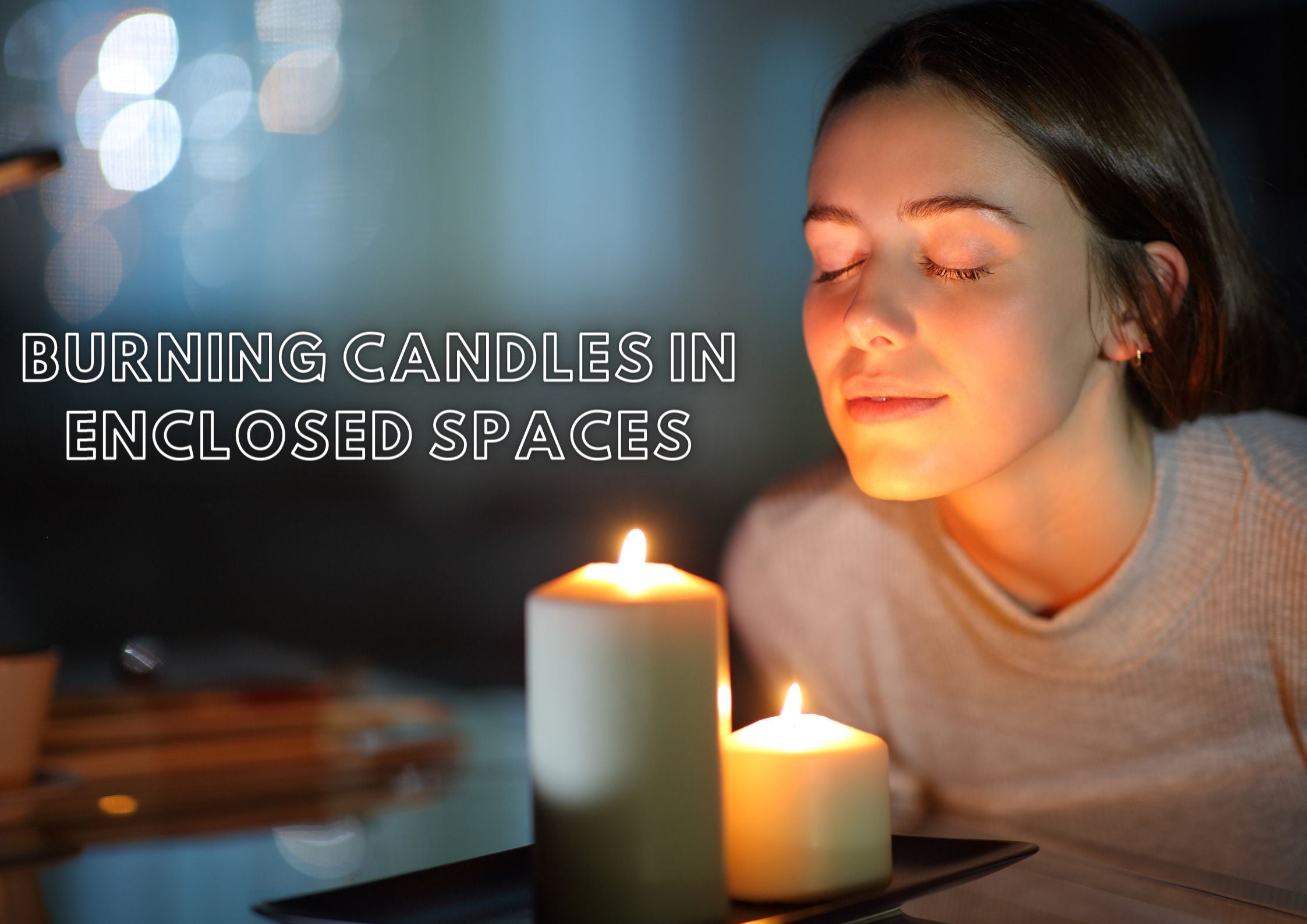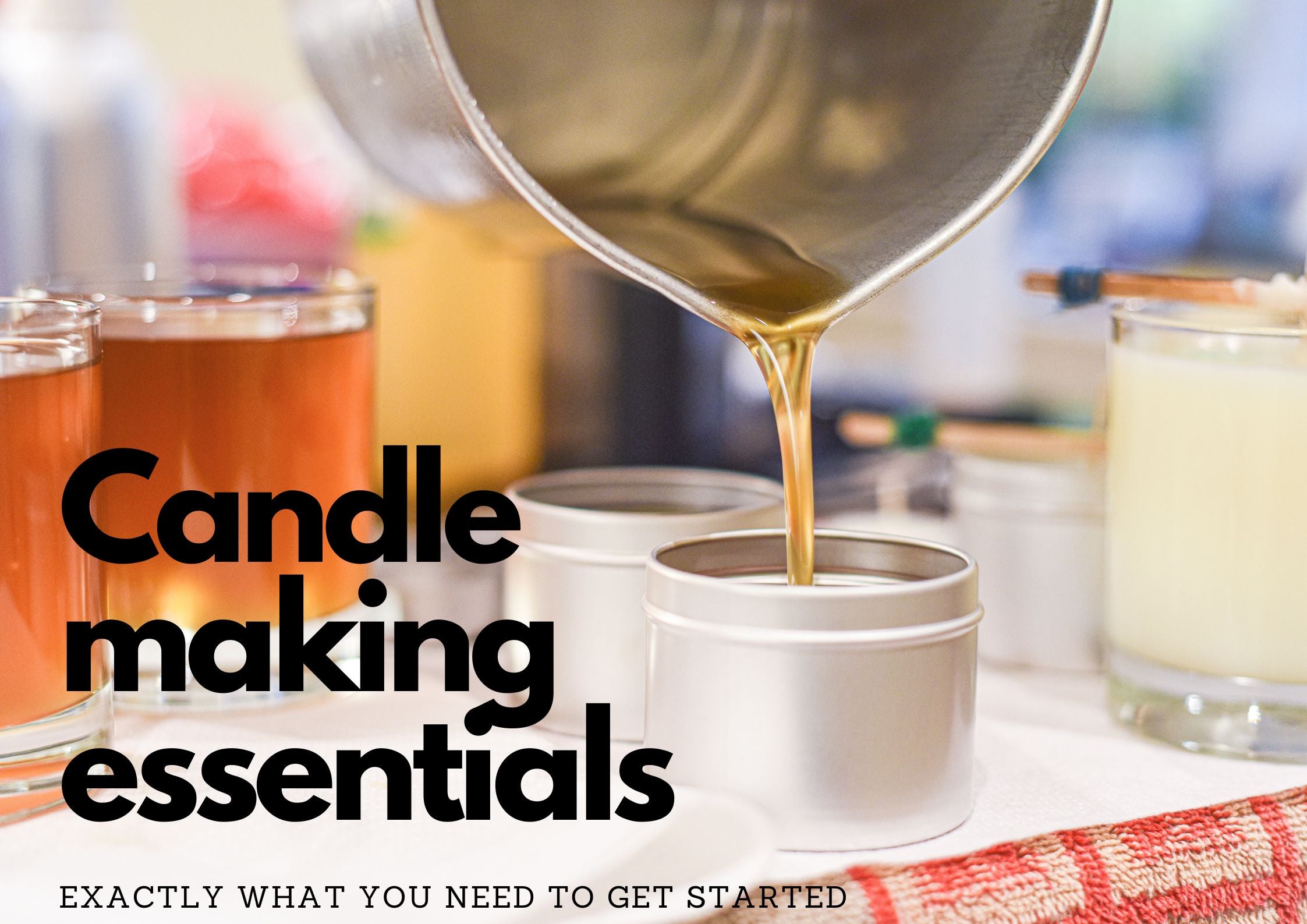Burning candles in enclosed spaces
Jan 12 , 2024
Lighting a candle at home can be soothing, but it's not always safe. Burning candles in small rooms can release harmful gases and reduce air quality. Our article offers essential safety tips to enjoy candles without risking health or starting a fire.
Keep reading - let's clear the air!
Key Takeaways
- Burning candles in small rooms can release dangerous chemicals like toluene and benzene, worsening air quality and affecting those with respiratory issues.
- There's a higher risk of starting a fire when candles are used in enclosed spaces, especially if they are near flammable objects or left unattended.
- Candle flashover is a serious threat where extreme heat from the candle could ignite nearby items, leading to a rapid spread of fire.
- Opening windows or using fans helps ventilate rooms when burning candles, reducing harmful gas build-up and protecting against smoke inhalation.
- Flameless LED lights, diffusers, or room sprays offer safer alternatives to traditional candles by providing fragrance without the risks associated with an open flame.
Potential Dangers of Burning Candles in Enclosed Spaces
Burning candles in enclosed spaces can lead to the emission of harmful gases and increase the risk of fire hazard, as well as the possibility of candle flashover. These dangers highlight the importance of ensuring safety when burning candles indoors.
Emission of harmful gases
Candles add a cosy ambience to any room, but they also release harmful gases that can affect indoor air quality. As the wax melts and the wick burns, candles emit chemicals like toluene and benzene – common culprits in indoor air pollution.
These substances are especially troubling for individuals with respiratory issues such as asthma, as they can trigger symptoms or worsen existing conditions.
Proper placement of scented candles is key to reducing health risks associated with their use indoors. It's important to keep them away from areas with little room ventilation where pollutants could concentrate.
Also, consider choosing candles made from natural materials which tend to produce fewer toxic by-products than those made from paraffin wax. Regularly trimming the candle wick can minimise soot and smoke output, ensuring oxygen levels remain unaffected while enjoying the warm glow of your favourite candles.
Increased risk of fire hazard
Burning candles in enclosed spaces poses an increased risk of fire hazard. The proximity of flammable materials and limited airflow can lead to a higher likelihood of accidental fires.
Excessive wax melting or the presence of curtains, papers, or other easily ignitable objects near the flame can escalate into a dangerous situation.
Smoke detectors are essential for identifying potential fire hazards early and should be maintained regularly to ensure they function properly. Placing candles on stable surfaces away from draughts and combustible items reduces the likelihood of accidental fires, ensuring a safer environment for everyone in the vicinity.
Possibility of candle flashover
Candles, when left unattended or placed near flammable materials, can lead to flashover. This occurs when extreme heat from the candle ignites nearby combustible items, potentially leading to a rapid spread of fire in enclosed spaces.
Ensuring that candles are placed on stable surfaces and away from curtains or other flammable objects is crucial in preventing flashovers and reducing the risk of fire hazards associated with burning candles indoors.
When using scented candles in enclosed areas, it's important to be mindful of the potential for flashover and take necessary precautions to mitigate this risk, such as regularly trimming wicks to reduce excessive flame height and ensuring that candles are extinguished before leaving the room.
Ways to Safely Burn Candles in Enclosed Spaces

Ensure proper ventilation by opening windows or using a fan, follow fire safety guidelines such as keeping candles away from flammable materials and never leaving them unattended, and consider alternative options to candles such as LED lights or diffusers for fragrance.
Ensure proper ventilation
Proper ventilation prevents the build up of harmful gases from burning candles. Opening a window or using a fan helps to circulate fresh air and reduces the risk of inhaling candle smoke, which can trigger asthma symptoms.
Carbon monoxide detectors are crucial for early detection of dangerous levels in enclosed spaces.
Consider alternative options to candles if proper ventilation isn't feasible in certain areas like bathrooms or small rooms. This will mitigate health risks associated with prolonged exposure to candle emissions.
Follow fire safety guidelines
When burning candles in enclosed spaces, fire safety guidelines must be followed to prevent potential hazards. Always keep candles away from flammable materials and out of reach of children or pets.
Ensure that smoke detectors are installed and functioning properly to provide early detection in case of a fire.
Regularly check the condition of the candle wick and avoid placing candles near draughts that can cause uneven burning or flickering flames. Additionally, never leave a burning candle unattended and always extinguish it before leaving the room or going to bed.
Consider alternative options to candles
When looking for alternative options to candles, consider using flameless LED candles. These are a safe and convenient choice that eliminates the risk of fire hazards and harmful emissions associated with burning traditional candles.
Another option is reed diffusers or essential oil diffusers, which can provide a pleasant scent without producing any smoke or soot. Additionally, room sprays or potpourri can be used to add fragrance to your space without the need for an open flame.
To reduce the health risks and fire hazards posed by burning candles in enclosed spaces, explore these alternative options that offer both safety and delightful fragrances.
Conclusion
In conclusion, burning candles in enclosed spaces can pose serious health and safety risks. Proper ventilation and adherence to fire safety guidelines are crucial for minimising these dangers.
Considering alternative options to scented candles may also help reduce the potential hazards associated with their use. It's important to prioritise the well-being of everyone in the space when deciding whether or not to burn candles indoors.
FAQs
1. What are the health risks of burning candles in enclosed spaces?
Burning candles in enclosed spaces can be harmful as they might trigger asthma and release toxins that could affect indoor air quality.
2. How should I place scented candles safely in my room?
To ensure safety, always place scented candles away from flammable objects and have proper ventilation to avoid toxin build-up.
3. Can scented candle placement affect my health?
Yes, incorrect scented candle placement in rooms without sufficient airflow may lead to poor air quality, posing potential health risks.
4. Are there any safety tips for using candles indoors?
Follow candle safety tips such as keeping lit candles out of reach of children, never leaving them unattended, and ensuring you extinguish them properly after use.





